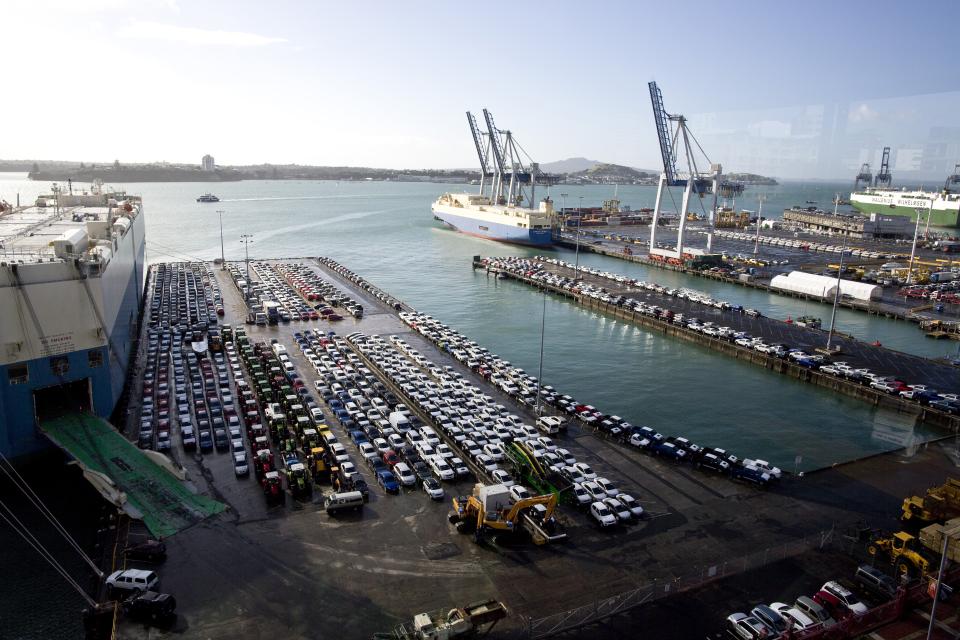New Zealand exporter confidence is up despite the fluctuating Kiwi dollar, as exporters focus on growing their businesses with strategies such as entering new markets, developing new products and services, as well as improving business processes.
This year, the DHL Export Barometer survey found that 65 percent of New Zealand exporters are confident that export orders will increase in the next 12 months. This is an increase from 2013 when confidence was at 59 percent.
The manufacturing sector leads in exporter confidence with 58 percent of exporters saying export orders have increased in the last 12 months, and 68 percent are expecting them to increase in the upcoming year. This is followed by the agricultural sector. 57 percent of exporters said export orders have increased in the last year to August 2015, and 71 percent expect them to increase in the next year.
In the services sector, 43 percent of exporters said export orders have increased in the last 12 months and 55 percent expect export orders to increase in the next 12 months.
Newer exporters, who have been exporting for one to five years, are the most optimistic: 85 percent anticipate an increase in expected orders for the coming 12 months. In comparison, only 61 percent of exporters that are 21 years or older, anticipate an increase.
“It is encouraging that exporter confidence continues to grow in New Zealand despite fluctuating exchange rates,” says Gary Edstein, senior vice president of DHL Express Oceania. “Our exporters continue to evolve and adapt, and are taking advantage of export opportunities as they arise. It’s interesting to note that the Asia and Pacific markets, particularly China, have provided new opportunities and newer exporters are quick to take advantage of this.”
Challenges facing exporters
Exchange rates were the most identified issue negatively impacting exports over the last 12 months, with 58 percent of exporters citing this as an issue. This is up slightly on 2013.
When asked about the biggest obstacles to exporting to new markets, almost a third of exporters identified regulatory environments as a barrier. A quarter of exporters named different business and cultural principles, as well as the strength of competition, as significant barriers to entry.
However, rising fuel costs are less of a concern. According to the 2011 DHL Export Barometer, 48 percent of those surveyed claimed rising fuel costs would negatively impact their export sales. This year, only 21 percent cited this as a concern.
“Fluctuations in the exchange rate can pose challenges, but on the flipside they can also benefit exporters, depending on the markets they are exporting into,” says Edstein. “Savvy exporters can use the exchange rate to their advantage.”
Coping with the fluctuating dollar: strategies and innovation
To cope with the fluctuating dollar, 46 percent of exporters have developed new products/services, 42 percent have improved business processes, and 41 percent have entered new markets in the past 12 months.
Around a third of exporters have invested in new sales and marketing approaches or enhanced their online presence.
Key markets: now and in the future
Australia and North America continue to be the largest export destinations overall. This is consistent with 2013. China has become a more popular export market, with 35 percent of exporters now exporting there compared to 31 percent in 2013. The Middle East is also on the rise at 17 percent, up from 13 percent in 2013.
Looking to the future, the top export destinations in the next five years are predicted to continue to be Australia and North America. Exporters forecast the Pacific to be a noteworthy area of growth, with 32 percent predicting this to be a significant export market in five years’ time.
Exporters look to the Chinese market
Newer exporters, whose businesses have been exporting for fewer than five years, are leveraging on the strong Chinese economy, with 24 percent of those businesses currently exporting to the Chinese market. Australia remains their strongest market with 70 percent exporting there, followed by North America and Europe.
For those companies exporting for more than five years, Australia, North America, the Pacific and Europe were the most identified markets. 35 percent exported to China.
Similarly Hong Kong is also recognized as a growing market, with 18 percent identifying this as an area of growth, up from eight percent in 2014.
“In the Chinese market, we are seeing exports are particularly strong in pharmaceutical products, machinery and electronics,” says Edstein.
‘Small Office/Home Office’ businesses and social media
Just over a quarter of ‘Small Office/Home Office’ exporters (1-4 employees) are using Facebook to generate orders, compared to only 15 percent of small businesses (5-19 employees), 14 percent of medium sized businesses (20-99 employees) and 13 percent of large businesses (100+ employees).
The majority of companies surveyed across the board (72 percent) are generating export sales from online orders, including 18 percent of exporters who generate 50 percent or more of their export orders online.





